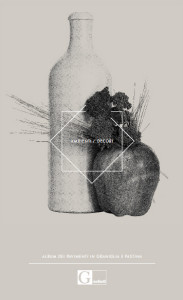Grandinetti Graniglia and Pastina Catalogue, the Italian terrazzo and cement tiles.

Finally online the new Grandinetti Catalogue that we describe in this way:
Wonderful simplicity
The following pages contain over one hundred years of history, the history of floors.
Terrazzo and pastina started life as products of the poor. Just like the best traditional dishes of Italian cooking, thanks to the expert ability of craftsmen, they have acquired a precise identity, arising from the various ages, trends and styles encountered during their history: art nouveau, liberty, classical abstract art, littorio, modernism and so on up to the present day.
Water, white cement, marble chips and natural oxides: this is simplicity, a term that seems an oxymoron when spoken looking at a decoration where coloured flowers are interwoven and where the use of perspective gives the idea of designs that change every time you look at them.
At the end of the 19th century and in the early 20th century there was just one rule for terrazzo and pastina tile floors: be bold. Polychrome floors that must be different in each room of the house: during the economic boom the rule was “build” and terrazzo tiles followed that trend. Size was not important, never mind the detail, the product was used for its technical features rather than its aesthetic ones. People were convinced that terrazzo tile floors would be hard-wearing and easy to maintain. This conviction of the past has been strengthened by over one hundred years of walking on the most beautiful floors in Italy and elsewhere.
The story of our times, which we are writing now, sees terrazzo and pastina tiles with a foot in the past. They are materials that are often used to restore old floors because of the infinite number of possibilities for repairing decorations and colours which we can offer with our hundred years’ experience. Technological progress, extraordinary versatility as well as a more general rediscovery of a taste for the beautiful mean that our products are used in a most diverse range of settings from classical to contemporary, and modern to vintage.
Download your pdf copy or ask for a paper one here.















